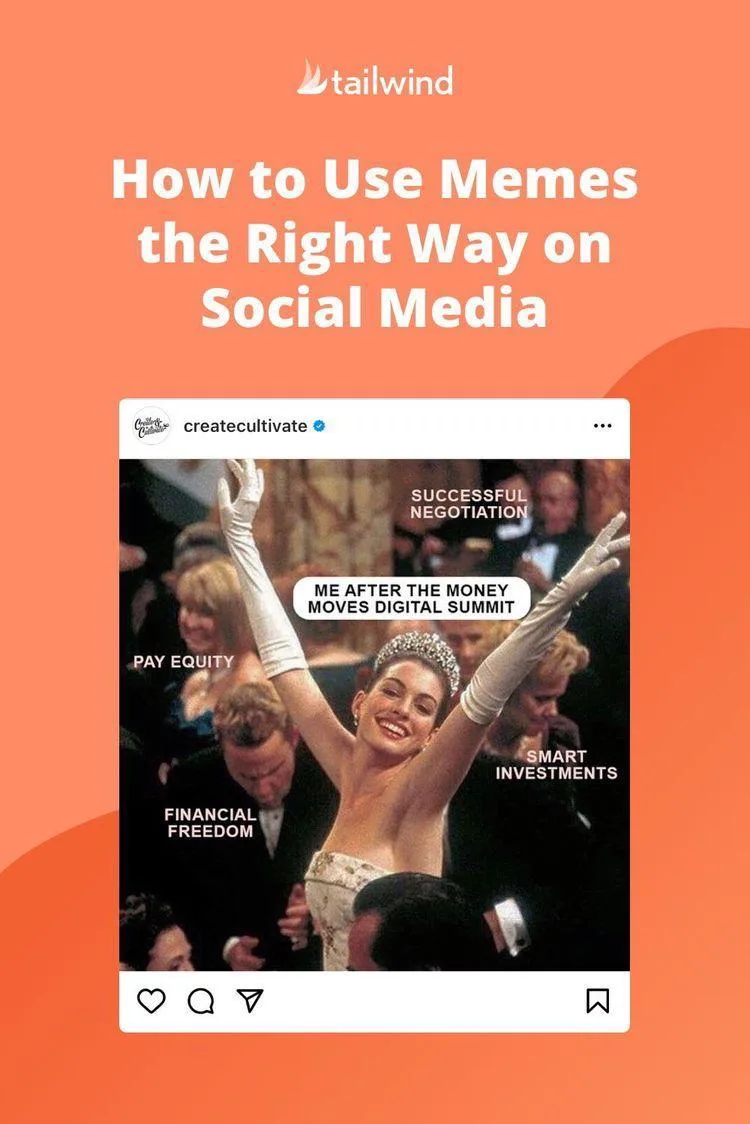Unleashing the Trendsetting Potential of Memes and Moments
Unveiling the Power of Moments in Marketing: Strategies for Captivating Your Audience
In today’s fast-paced and ever-evolving digital landscape, marketing strategies must constantly adapt to capture the attention of target audiences. Two powerful tools that have emerged as game-changers in the world of marketing are moments and memes. By leveraging these elements effectively, brands can tap into the viral nature of internet culture and propel their message to new heights. In this blog, we will explore the significance of moments and memes in trendsetting marketing and provide case studies and examples to illustrate their impact.
Understanding Moments in Marketing:
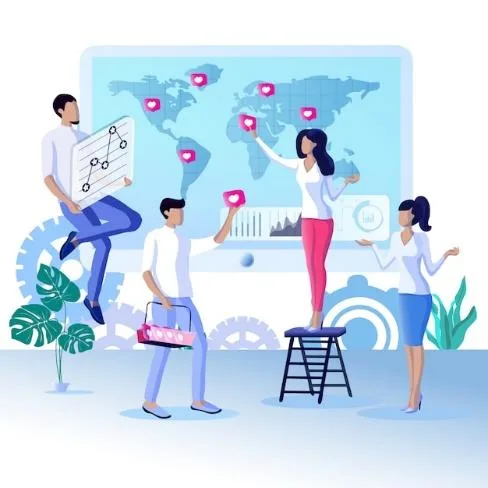
Moments are key opportunities that arise within the cultural, calendar, or personal contexts, offering brands the chance to connect with their target audience in a meaningful way. By identifying and leveraging these moments, marketers can create campaigns that resonate deeply with consumers.
One type of moment is calendar-based moments, such as holidays and festivals. Brands can align their messaging with these occasions to evoke emotions and build a sense of camaraderie. For example, Coca-Cola’s annual “Holidays Are Coming” campaign, centered around Christmas, has become synonymous with the festive season and has successfully generated widespread brand affinity.
Cultural moments, on the other hand, involve tapping into trending topics and events. By staying informed and engaging with current conversations, brands can position themselves as relevant and relatable. Nike’s “Dream Crazy” campaign featuring Colin Kaepernick, which sparked conversations about social justice and activism, exemplifies the power of leveraging cultural moments to make a lasting impact.
Furthermore, brands can also create personalized moments by recognizing and celebrating their customers’ milestones and achievements. Starbucks’ “Birthday Reward” program, offering customers a free drink on their birthday, not only generates customer loyalty but also creates a personal moment of joy and gratitude.
Unveiling the Power of Moments in Marketing: Strategies for Captivating Your Audience

In today’s fast-paced digital landscape, capturing the attention of consumers is a constant challenge for marketers. However, amidst the noise, there lies a powerful opportunity to create a lasting impression through moments in marketing. In this blog, we will explore the significance of moments and provide valuable insights into how brands have successfully leveraged them to captivate their audience.
- The Impact of Moments in Marketing:
Moments play a pivotal role in marketing, offering a unique opportunity to leave a lasting impact on consumers. By definition, moments are significant events or experiences that create powerful memories. In marketing, these moments are carefully crafted to evoke emotions, build connections, and inspire action. Understanding the psychological impact of moments is crucial in developing effective marketing strategies.
- Identifying Key Moments:
A. Calendar-based moments:

1. Leveraging holidays and festivities for brand campaigns:
Holidays and festivities provide an excellent backdrop for brand campaigns. A notable example is Coca-Cola’s iconic “Holidays Are Coming” campaign, which features the festive Coca-Cola truck and has become synonymous with the holiday season.
2. Capitalizing on seasonal events to drive engagement:
Seasonal events offer opportunities for brands to connect with their audience. Starbucks’ Pumpkin Spice Latte launch has become a highly anticipated annual event, creating a sense of excitement and driving engagement.
B. Cultural moments:
1. Recognizing and aligning with trending topics and events:
Brands can tap into trending topics and events to create relevance and connect with their audience. Nike’s “Dream Crazy” campaign featuring Colin Kaepernick sparked a powerful conversation around social issues and resonated with consumers.
2. Engaging in real-time marketing to connect with audiences:
Real-time marketing allows brands to seize spontaneous opportunities. An excellent example is Oreo’s iconic “Dunk in the Dark” tweet during the Super Bowl blackout, which showcased their creativity and instantly captured attention.
C. Customer moments:
1. Celebrating personal milestones and achievements:
Brands can celebrate their customers’ milestones and achievements, creating a sense of appreciation and loyalty. Spotify’s “Wrapped” campaign, which delivers personalized year-in-review playlists, delights users and fosters a strong connection.
2. Using data-driven marketing to enhance the customer experience:
Leveraging customer data allows brands to deliver personalized experiences. Amazon’s personalized product recommendations based on browsing history exemplify how data-driven marketing can enhance customer satisfaction.
III. Crafting Memorable Experiences:
A. Emotional storytelling:

1. Tapping into universal emotions to create resonance:
Brands can create powerful moments by tapping into universal emotions. Google’s “Dear Sophie” ad, which portrays a father documenting his daughter’s life through Google services, resonated deeply with audiences worldwide.
2. Eliciting nostalgia for emotional connection:
Nostalgia can evoke strong emotions and foster a sense of connection. Coca-Cola’s “Share a Coke” campaign, where personalized bottles with popular names were distributed, successfully tapped into nostalgia and encouraged social sharing.
B. Surprise and delight:
1. Unexpected gestures to create positive brand experiences:
Brands can create memorable moments by surprising and delighting their audience. WestJet’s “Christmas Miracle” campaign, where they surprised passengers with personalized gifts at the baggage claim, generated immense goodwill and positive brand experiences.
2. Personalization and customization for a tailored experience:
Personalization allows brands to tailor experiences to individual preferences. Coca-Cola’s “Share a Coke” personalized bottles, where customers’ names were featured on the labels, created a sense of ownership and personal connection.
- User-generated content:

1. Empowering customers to share their experiences:
Brands can encourage customers to share their experiences and create user-generated content. GoPro’s user-generated content
The Impact of Memes on Marketing:
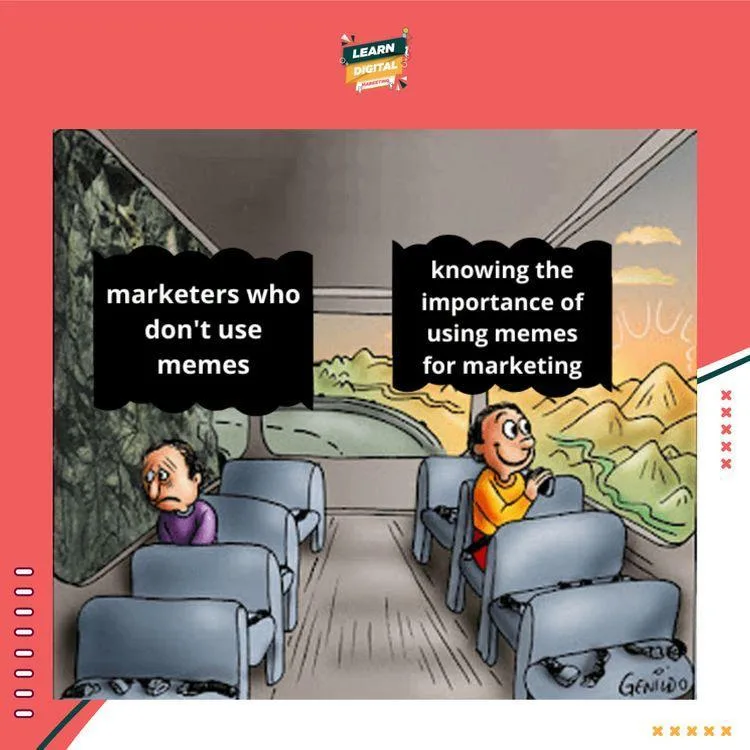
Memes have become a significant part of internet culture, serving as a form of social currency that fosters engagement and virality. Understanding the dynamics of memes and incorporating them into marketing strategies can propel brands to new heights of popularity and reach.
A meme is a piece of content that is typically humorous and spread rapidly through social platforms. They often reference shared experiences, relatable situations, or trending topics. By embracing the relatability and humor inherent in memes, brands can connect with their audience on a personal level.
One successful example of incorporating memes into marketing is Wendy’s, the fast-food chain known for its witty and sarcastic Twitter presence. By engaging in playful banter with users and using memes as a part of their brand messaging, Wendy’s has cultivated a devoted following and generated significant social media buzz.
The Memetic Revolution: Unleashing the Impact of Memes on Marketing
Unveiling the Memetic Powerhouse: How Memes Have Revolutionized Marketing
In today’s digital era, the internet has given birth to a new form of cultural currency: memes. Memes have taken the world by storm, spreading rapidly through social media platforms and permeating popular culture. In this blog, we will delve into the remarkable impact of memes on marketing and explore how brands have successfully harnessed their power to captivate audiences and drive engagement.
I. The Memetic Culture: A New Language of the Internet
Memes have evolved from simple internet jokes to a cultural phenomenon that transcends borders and language barriers. Defined as humorous or relatable images, videos, or text that spread rapidly across the internet, memes have become a ubiquitous part of our online experience. Memes resonate with people on a psychological level, tapping into shared experiences, emotions, and humor. They have become a language of their own, allowing people to communicate and express themselves in a way that traditional marketing cannot.
II. Harnessing the Power of Memes in Marketing
A. Embracing Relatability and Humor

One of the key reasons memes have become a powerful marketing tool is their relatability and humor. Brands that understand their target audience and can tap into shared experiences have successfully integrated memes into their marketing strategies. Wendy’s, known for its witty Twitter presence, engages with customers using humorous and relatable responses, making their brand more approachable and memorable. Similarly, Old Spice’s “The Man Your Man Could Smell Like” campaign used humor to create a lasting impression and connect with their audience.
B. Incorporating Memes in Brand Messaging
Memes are often a reflection of pop culture and current trends. By incorporating memes into their brand messaging, companies can show that they are in tune with their audience and the latest cultural references. Netflix, for example, cleverly references popular memes in their social media posts, making their content relatable and shareable. Additionally, brands can leverage existing meme formats and viral challenges to integrate their products or services seamlessly. Adobe’s “Photoshop Meme Challenge” invited users to create memes using their software, generating buzz and user engagement.
III. Going Viral: The Impact of Memes on Brand Visibility
A. Memes as Shareable Content
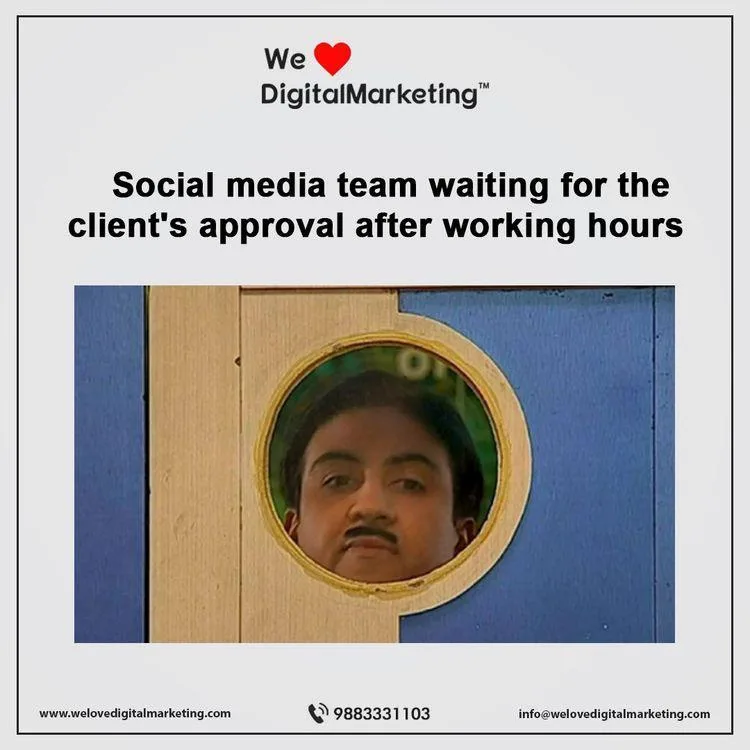
Memes are highly shareable content, often spreading like wildfire across social media platforms. Their contagious nature can lead to increased brand visibility and exposure. Denny’s “zoom in” tweet, which encouraged users to zoom in on a photo to reveal a hidden message, went viral, generating widespread engagement and brand awareness. Brands can create meme-worthy moments by tapping into cultural events or creating unique content that resonates with their target audience, as seen in NASA’s Mars Rover landing memes.
B. Memes and User-Generated Content
User-generated memes provide a valuable opportunity for brands to engage with their audience and generate organic brand promotion. Brands can encourage users to create and share memes related to their products or services. The “Distracted Boyfriend” meme, with various brands putting their own spin on it, exemplifies how user-generated memes can generate buzz and increase brand visibility. Coca-Cola’s “Share a Coke” campaign even encouraged users to create personalized memes featuring their customized Coke bottles, fostering a sense of ownership and engagement.
IV. The Dos and Don’ts of Memetic Marketing
While memes can be a powerful marketing tool, it is essential to approach them strategically and ethically.
A. Dos:
1. Stay in tune with the ever-evolving meme landscape: Keep up with current trends, formats, and platforms to ensure relevance and freshness in your meme-based marketing efforts.
2. Understand your target
Synergizing Moments and Memes for Trendsetting Marketing:
When moments and memes are combined strategically, brands can create content that is both memorable and shareable, elevating their marketing efforts to new heights.
Identifying memorable and shareable moments requires staying attuned to real-time marketing opportunities. When unexpected events occur, brands that can quickly respond with relevant and engaging content can capture the attention of their audience. Oreo’s “Dunk in the Dark” tweet during the Super Bowl blackout is a prime example of seizing a real-time moment and creating a viral sensation.
Viral challenges and trends also present opportunities for brands to participate and create shareable content. For instance, when the ALS Ice Bucket Challenge went viral, countless individuals and brands joined in, resulting in increased awareness and donations for the cause. By actively engaging with these trends, brands can ride the wave of popularity and align themselves with a broader conversation.
Crafting memorable and shareable content involves a delicate balance of authenticity, relevance, and audience engagement. Burger King’s “The Moldy Whopper” campaign stands out as a prime example.
Burger King’s “The Moldy Whopper” campaign stands out as a prime example of creating memorable and shareable content. The campaign aimed to highlight the brand’s commitment to removing artificial preservatives from its menu items. To convey this message, Burger King released a time-lapse video showing a Whopper burger gradually decaying over a period of 34 days. Although the visual might seem unappetizing, the underlying message resonated with consumers who prioritize natural and healthier food options.
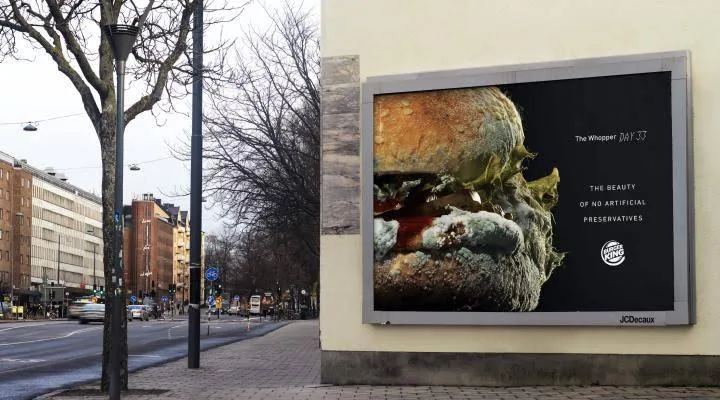
“The Moldy Whopper” campaign generated a significant buzz on social media and sparked conversations about the importance of transparency and quality in fast-food chains. By leveraging the moment of growing consumer interest in clean eating and the power of a visually striking meme-like concept, Burger King successfully made a trendsetting marketing move that captured the attention of millions.
Unleashing the Power Duo: Synergizing Moments and Memes for Trendsetting Marketing
The Perfect Marriage: How Moments and Memes Combine to Create Trendsetting Marketing Magic
In the fast-paced and ever-evolving world of marketing, capturing your audience’s attention requires creativity, innovation, and a deep understanding of digital culture. Brands that can tap into the power duo of moments and memes have discovered a winning formula for creating trendsetting marketing campaigns. In this blog, we will explore the remarkable impact of combining moments and memes, while showcasing real-world examples of brands that have successfully embraced this strategy.
I. The Power of Moments and Memes:
Moments and their ability to create lasting impressions:
Every day, our lives are filled with moments – big or small, joyous or challenging – that shape our experiences and memories. Moments have the power to evoke emotions, forge connections, and leave a lasting impact on individuals.
Memes and their role in virality and cultural relevance:
Memes, on the other hand, have become a ubiquitous part of online culture. They are humorous, relatable, and easily shareable pieces of content that spread rapidly through social media platforms. Memes have the unique ability to capture the zeitgeist and reflect the current cultural conversation.
Understanding the synergy between moments and memes for trendsetting marketing:
When moments and memes come together, they create a powerful synergy. Memes can amplify the impact of moments by adding humor, relatability, and shareability. Conversely, moments provide the context and relevance that make memes resonate deeply with audiences. By harnessing this synergy, brands can create trendsetting marketing campaigns that capture attention, generate buzz, and build strong connections with their target audience.
II. Crafting Memorable Moments:
A. Calendar-Based Moments:
Leveraging holidays and special occasions:
Brands can tap into the collective sentiment and excitement surrounding holidays and special occasions. By aligning their marketing campaigns with these moments, they can create memorable experiences that resonate with their audience.
Case study: Oreo’s “Daily Twist” campaign:
Oreo’s “Daily Twist” campaign during the brand’s 100th anniversary leveraged the power of calendar-based moments. Each day for 100 days, Oreo released a new image on social media, featuring an Oreo cookie creatively integrated with a significant moment or event happening on that specific day.
Capitalizing on cultural celebrations and events:
In addition to holidays, cultural celebrations and events provide opportunities for brands to connect with their audience. By acknowledging and participating in these moments, brands can create campaigns that tap into the cultural zeitgeist.
Example: Google’s interactive Doodles for various milestones:
Google has become synonymous with its interactive Doodles that celebrate significant cultural moments and milestones. These playful and engaging animations create a memorable user experience and generate widespread buzz.
B. Real-Time Moments:
Engaging in real-time marketing to seize current events:
Real-time marketing involves capitalizing on current events and trending topics to create timely and relevant content. By staying agile and responsive, brands can capture the attention of their audience in the midst of viral moments.
Case study: Wendy’s “Nuggs for Carter” tweet:
When Carter Wilkerson tweeted at Wendy’s asking how many retweets he needed for a year’s supply of chicken nuggets, Wendy’s responded with a challenge: If Carter reached 18 million retweets, he would get his nuggets. This exchange quickly went viral, generating massive engagement and turning into a real-time marketing success for Wendy’s.
Tapping into viral challenges and internet trends:
Internet trends and challenges have become an integral part of online culture. Brands that can tap into these trends and create content that aligns with them can quickly gain traction and capture the attention of their target audience.
Example: TikTok’s #BottleCap
The Dos and Don’ts of Moment and Meme-based Marketing:
To effectively leverage moments and memes in marketing campaigns, it’s essential to follow some best practices while avoiding pitfalls that could undermine brand reputation.
Dos:
1. Research your audience and platform: Understanding your target audience’s preferences, interests, and preferred social platforms is crucial for crafting content that resonates.
2. Stay current with trends and internet culture: Regularly monitor social media trends, viral challenges, and popular memes to ensure your content remains relevant and relatable.
3. Take calculated risks: Don’t be afraid to push boundaries and think outside the box. Successful trendsetters in marketing often take calculated risks that captivate audiences and differentiate their brand.
Don’ts:
1. Engage in insensitive or offensive content: Always exercise caution and avoid using memes or moments in a way that could be interpreted as offensive or insensitive to certain groups or individuals.
2. Overuse memes without context: While memes can be powerful, using them excessively or without context may dilute their impact. Ensure that memes align with your brand identity and add value to the message you’re conveying.
3. Ignore brand alignment and consistency: While it’s important to be trendy, it’s equally crucial to maintain brand alignment and consistency. Ensure that your marketing efforts align with your brand’s values and voice.
The Future of Moment and Meme-based Marketing:
As the internet culture continues to evolve, marketers must stay ahead of the curve to remain relevant. One platform that has significantly influenced memetic marketing is TikTok. With its short-form videos and viral challenges, TikTok has become a breeding ground for memes and trends. Brands that understand the platform’s dynamics and engage with its user base have the potential to create trendsetting marketing campaigns.
Looking forward, the future of moment and meme-based marketing lies in embracing new platforms and formats. As technology advances, virtual and augmented reality experiences, interactive advertisements, and personalized content will play an increasingly prominent role. The key is to embrace innovation and creativity while staying true to the core principles of resonating with audiences and creating shareable moments.
Moments and memes have emerged as powerful tools in trendsetting marketing, enabling brands to connect with their audience on a deeper level and create viral sensations. By understanding the significance of moments, harnessing the impact of memes, and synergizing both elements, brands can craft content that is memorable, shareable, and buzz-worthy.
Remember to conduct thorough research, stay aligned with your brand values, and maintain consistency throughout your marketing campaigns. With the right approach, you can be at the forefront of trendsetting marketing, captivating audiences and leaving a lasting impact in the ever-evolving digital landscape. Embrace innovation, creativity, and the power of moments and memes to become a trendsetter in your industry.

